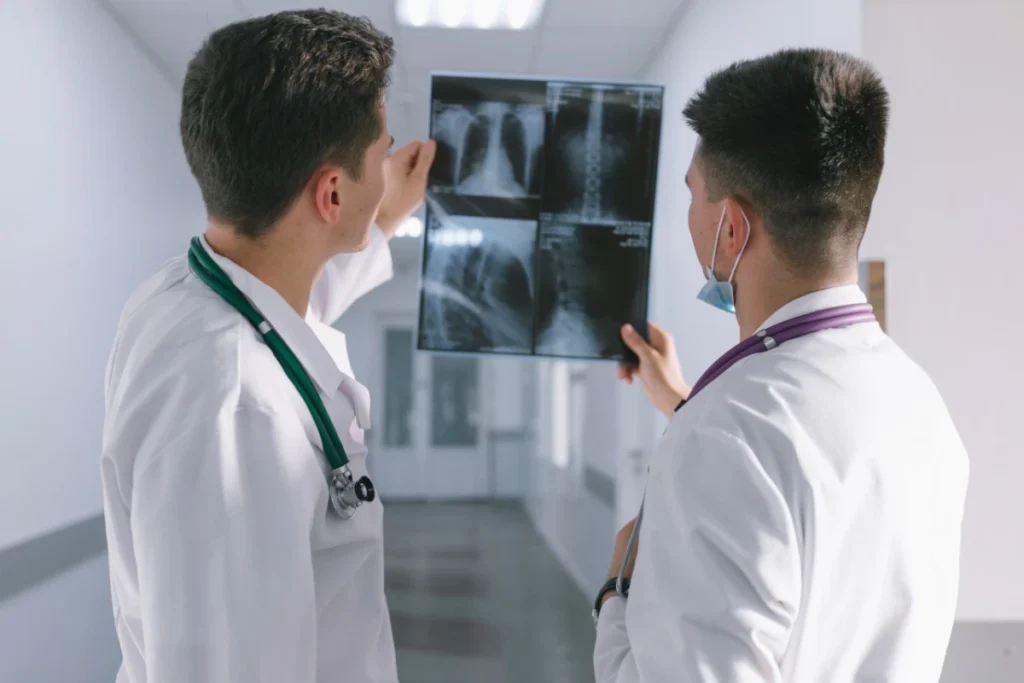
What is the scope of a Limited Scope X-Ray Technician?
Limited Scope X-Ray Technicians also known as Limited X-Ray Machine Operators (LXMOs) have a specific scope of practice, which means they are trained and authorized to perform certain radiographic procedures. While their scope of practice may vary from state to state, generally, they are responsible for the following:
- Conducting X-ray examinations following established protocols and safety procedures.
- Positioning patients correctly to obtain clear and accurate images.
- Operating X-ray equipment and adjusting settings as necessary.
- Ensuring patient comfort and safety during the procedure.
- Developing X-ray films or producing digital images for interpretation by the radiologist or physician.
- Maintaining accurate patient records and documentation.
- Upholding ethical and professional standards in patient care.
It’s important to note that LXMOs have limitations in terms of the types of exams they can perform. They typically focus on routine X-ray procedures, such as imaging of the chest, extremities, and spine. They do not perform more complex procedures, such as fluoroscopy or specialized imaging of organs.
Where do they work?
LXMOs can find employment in various healthcare settings, including:
- Hospitals: Many hospitals have their own radiology departments where LXMOs work alongside radiologists and other imaging professionals.
- Imaging Centers: Stand-alone imaging centers often employ LXMOs to perform X-ray examinations for outpatients.
- Urgent Care Centers: LXMOs may work in urgent care centers, where they assist in diagnosing and treating minor injuries and illnesses.
- Physician Offices: Some physician offices have their own X-ray equipment, and LXMOs can apply to perform X-ray exams as part of the diagnostic process.
- Orthopedic Clinics: LXMOs may work in orthopedic clinics, assisting in the imaging of fractures and other musculoskeletal conditions.
How to become an LXMO?
Becoming a LXMO requires a combination of education, training, and certification. Here are the general steps to follow:
- Education: Obtain a high school diploma or GED equivalent. It is the minimum educational requirement to pursue a career as a Limited Scope X-Ray Technician.
- Complete a Limited Scope X-Ray Technician Program: Enroll in a state-approved Limited Scope X-Ray Technician program. These programs typically last between 6 months to 2 years. It provides the necessary theoretical knowledge and practical skills required for the profession. The curriculum may include coursework in radiographic positioning, radiation safety, anatomy, and patient care.
- Clinical Training: After completing the didactic portion of the program, students must undergo a clinical training period. This allows them to gain hands-on experience in performing X-ray procedures under the supervision of experienced technologists or radiologists.
- Certification: Once the educational and clinical requirements are met, aspiring LXMOs must obtain certification from a recognized certifying body. The American Registry of Radiologic Technologists (ARRT) offers the Limited Scope of Practice in Radiography certification. This certification is widely recognized in the field.
- State Licensure: In addition to certification, some states may require LXMOs to obtain a license to practice. The specific requirements vary by state. So, it’s essential to check the regulations of the state where you intend to work.
- Continuing Education: To maintain certification and stay up-to-date with advancements in the field, LXMOs must complete continuing education credits on a regular basis.
Job Outlook
The coming years are anticipated to see a growth in demand for Limited Scope X-Ray Technicians, driven by an aging population and advances in medical technology. According to projections by the Bureau of Labor Statistics, a 9% increase in the employment of radiologic and MRI technologists, including LXMOs, is forecasted from 2020 to 2030, outpacing the average for all occupations.
The job prospects for LXMOs are generally favorable, with opportunities available in various healthcare settings. As technology continues to advance, there may also be opportunities for specialization and career advancement within the field.
Final Thoughts
A career as a Limited Scope X-Ray Technician can be a rewarding choice for those interested in the field of radiology and healthcare. With the right education, training, and certification, individuals can embark on a fulfilling career that allows them to contribute to patient care and diagnosis.
If you’re considering a career as a LXMO, CCI Training Center can help you achieve your goals. They offer a comprehensive Limited Scope X-Ray Technician program that provides the knowledge and skills necessary to succeed in the field. With financial aid options available, accelerated program formats, flexibility and convenience of instructor-led online classes, instructor support, and career services, CCI Training Center can help you kick-start your career as a Limited Scope X-Ray Technician.
Program Offered
- Pharmacy Technician Training
- Online Medical Assistant
- Medical Billing and Coding Specialist Program
- Cloud Computing Technician Training
- Computer Network Technician
- Business and Accounting
- Radiology Technician Training
- Medical Assistant Program
- Computer Support Technician
- Cybersecurity Program
- Virtual Assistant Training

This article is written by
Share this article
Program Offered
- Pharmacy Technician Training
- Online Medical Assistant
- Medical Billing and Coding Specialist Program
- Cloud Computing Technician Training
- Computer Network Technician
- Business and Accounting
- Radiology Technician Training
- Medical Assistant Program
- Computer Support Technician
- Cybersecurity Program
- Virtual Assistant Training

This article is written by
Share this article
Related Articles

















